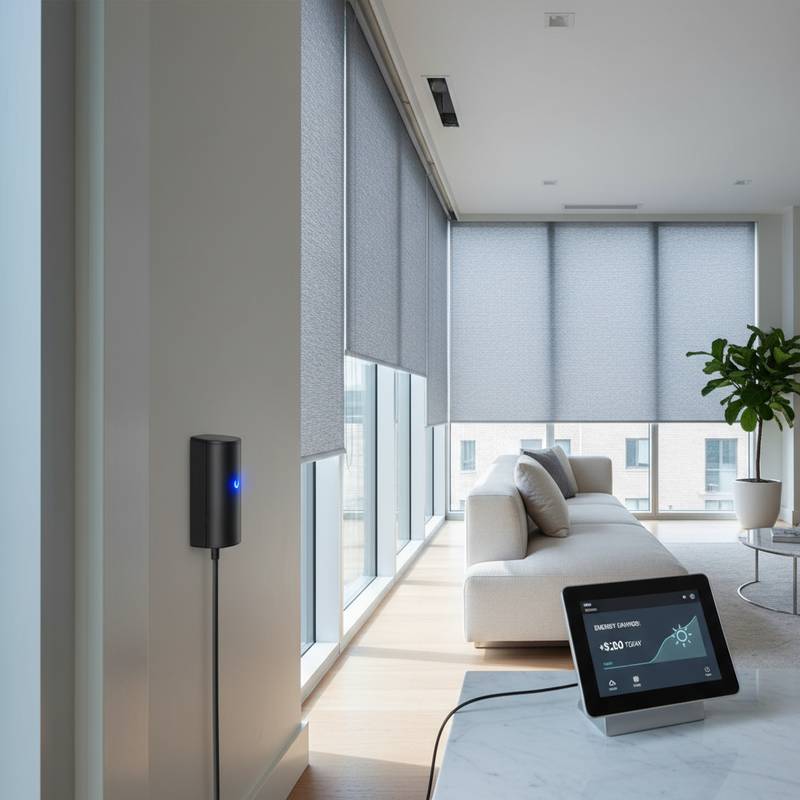Auto-Adjusting Blinds Cut Energy Bills by $2 Daily
Auto-adjusting smart blinds represent a significant advancement in home automation. These devices intelligently manage sunlight exposure to optimize indoor comfort while reducing energy consumption. Homeowners can expect average daily savings of approximately $2 on heating, cooling, and lighting costs through precise control of natural light and temperature.
The technology integrates seamlessly with modern smart home ecosystems. Sensors detect changes in sunlight, temperature, and occupancy, triggering automatic adjustments. This results in a more efficient living space that aligns with sustainability goals and enhances daily convenience.
Understanding the Technology Behind Auto-Adjusting Blinds
Auto-adjusting blinds operate using a combination of sensors and motorized mechanisms. Light sensors measure incoming sunlight intensity, while temperature sensors monitor room conditions. When sunlight becomes excessive, the blinds lower automatically to block heat, preventing the need for air conditioning.
Motion sensors add another layer of efficiency by detecting occupancy. If a room remains empty, the blinds adjust to a neutral position that minimizes energy loss through windows. Integration with voice assistants or apps allows users to customize settings for different times of day or seasons.
Advanced models connect to weather data via smart hubs. This predictive feature anticipates sunny afternoons or cold nights, positioning blinds proactively. Such foresight ensures consistent performance without manual intervention.
Key Benefits for Energy Savings and Comfort
The primary advantage lies in reduced energy bills. By blocking summer heat, these blinds decrease reliance on cooling systems, which account for a substantial portion of household electricity use. In winter, they trap warmth during the day and open at night to allow passive solar heating, balancing indoor temperatures naturally.
Comfort improves as glare from direct sunlight diminishes. This creates a more pleasant environment for work, relaxation, or entertainment. Users report fewer headaches from bright light and more stable room temperatures throughout the day.
Sustainability benefits emerge from lower carbon footprints. Traditional blinds require constant manual adjustments, leading to inconsistent energy management. Auto-adjusting versions promote eco-friendly habits by automating efficient practices.
Quantifying the Savings
Studies indicate that proper window treatments can reduce energy costs by 10 to 25 percent. For an average household, this translates to $2 daily or over $700 annually. Factors such as home size, climate, and blind coverage influence exact figures, but the return on investment typically occurs within two years.
Exploring Options from Budget to Luxury
Entry-level auto-adjusting blinds suit basic needs. These retrofit kits attach to existing blinds, adding motors and simple sensors for under $100 per window. They offer core automation without extensive wiring, ideal for renters or modest budgets.
Mid-range options include app-controlled systems with voice integration. Priced between $150 and $300 per window, they provide scheduling features and compatibility with platforms like Alexa or Google Home. Durability and quiet operation make them suitable for frequent use.
Luxury models feature premium materials and advanced AI. Costs range from $400 to $800 per window, incorporating UV-blocking fabrics and energy-harvesting batteries. These blinds learn user preferences over time, refining adjustments for personalized efficiency.
Steps to Install and Integrate Smart Blinds
Begin by assessing your home's windows. Measure sizes and evaluate exposure to sunlight, as south-facing windows benefit most from automation. Consider the number of rooms to prioritize based on usage and energy loss.
- Select compatible products based on your smart home setup. Ensure they support your preferred ecosystem to avoid integration issues.
- Follow manufacturer instructions for installation. Most systems require minimal tools, with mounting brackets securing motors to window frames.
- Connect to power sources, either via batteries or outlets. Rechargeable options last up to a year between charges.
- Pair with a hub or app for initial setup. Calibrate sensors by testing adjustments in various lighting conditions.
- Customize routines, such as opening blinds at sunrise or closing during peak heat hours.
Professional installation services handle complex setups for larger homes. This ensures optimal placement and wiring, maximizing performance from the start.
Achieving Long-Term Efficiency and Savings
Regular maintenance keeps auto-adjusting blinds performing at peak levels. Dust sensors periodically and update firmware through apps to access new features. Monitor energy usage via connected thermostats to track savings over time.
Combine blinds with other efficiency measures, such as LED lighting or insulated curtains. This layered approach amplifies results, potentially doubling daily savings. Homeowners who adopt these systems often see broader lifestyle improvements, including reduced utility stress and enhanced property value.
Investing in auto-adjusting blinds transforms routine home management into an effortless process. The combination of cost reductions, comfort gains, and environmental impact positions them as a worthwhile upgrade for any household.
